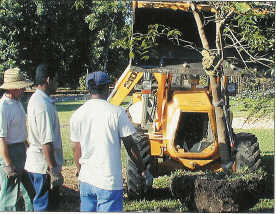
Secrets of the Tree Trunks
Jack Fisher, Ph.D., Senior Research Scientist
Photos by Benoit Jonckheere
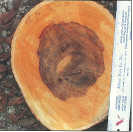 |
| Hebestigma cubense: yellow sapwood and dark heartwood |
Tree trunks provide extensive knowledge for scientists and horticulturists. The spectacularly varied colors of wood within their trunks indicate different types of wood. The dark central region of a cut log is called heartwood. It is usually surrounded by a narrow layer of light-colored wood, sapwood, which is next to the bark. As the name implies, sapwood carries sap or water from the roots to the leaves. We know the cells of sapwood are the youngest in the trunk, since they are next to the cambium layer that produces all the wood of the tree. The cambium is the slippery, moist layer that is obvious when the bark is peeled from a freshly cut log or twig. In most trees — e.g., pine, oak, and mango — cells slowly die as wood ages, starting near the pith at the center and gradually extending out to the bark.
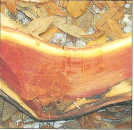 |
| Caesalpinia platyloba: obliquely sawn log shows reddish heartwood |
As wood cells age, they make and accumulate chemical compounds in their walls and within each cell. The chemicals are mostly complex phenolic compounds that have several properties: they are pigmented; they are antimicrobial and they taste badly to insects and higher animals. Heartwood, which is formed when cells die, may also be formed after injury. The dark heartwood of branches that have died or were injured may extend from the bark into the trunk where it forms knots. Sometimes the pigmented region continues farther down the trunk, producing a complex pattern of light and dark. These colorful compounds form a barrier against rot and insects. It just happens that we humans love the color and grain found in such heartwoods as dark brown mahogany, reddish cherry, black ebony, rosewood, cocobolo, and purpleheart. We also like the colors produced by some heartwood such as logwood (Haematoxylon), which is used as a natural dye. However, we should remember that the beautifully colored compounds have only one biological purpose: to defend the tree against destructive organisms.
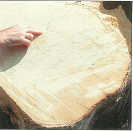 |
| Erythrina variegata: light sapwood throughout its massive trunk |
As fascinating as this is, the complete picture is far more complex. Some old trees have had no heartwood. For example, a large Erythrina may have uniformly white wood. Under a microscope, we may see that all of the wood cells, right down to the oldest wood next to the pith, are alive and healthy. Many other species of tropical trees also have thick trunks with no heartwood. Most members of the Bombacaceae family (baobab, balsa, shaving brush trees) and many Apocynaceae (Alstonia or scholar's tree) fit in this category. These species use a different strategy to fight rot and infection. Instead of accumulating defensive compounds when old wood dies, the wood cells remain alive, fighting off microbes by creating chemical inhibitors only after the cells are injured or infected.
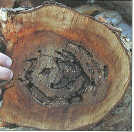 |
| Koelreuteria elegans: dark heartwood riddled with termite galleries |
Tropical foresters are familiar with these differences. When they cut down trees with a large proportion of heartwood, they often discover that the trunks are hollow due to rot or termite damage near the pith, but the remaining wood is hard and resists decay. The pigmented chemicals have greatly slowed the decay process, although the oldest wood in the center may have succumbed. When a sapwood tree is cut, it rarely has a hollow trunk center, because the living wood cells have prevented rot or created wound tissue that healed over past damage. However, the cells of this sapwood rot quickly after the tree is cut, since they are soft, lack protective chemicals and are full of starch that decay organism feed on. Both heartwood species and sapwood species can become giants of the rainforest, but they use very different methods for defending their trunks from decay.